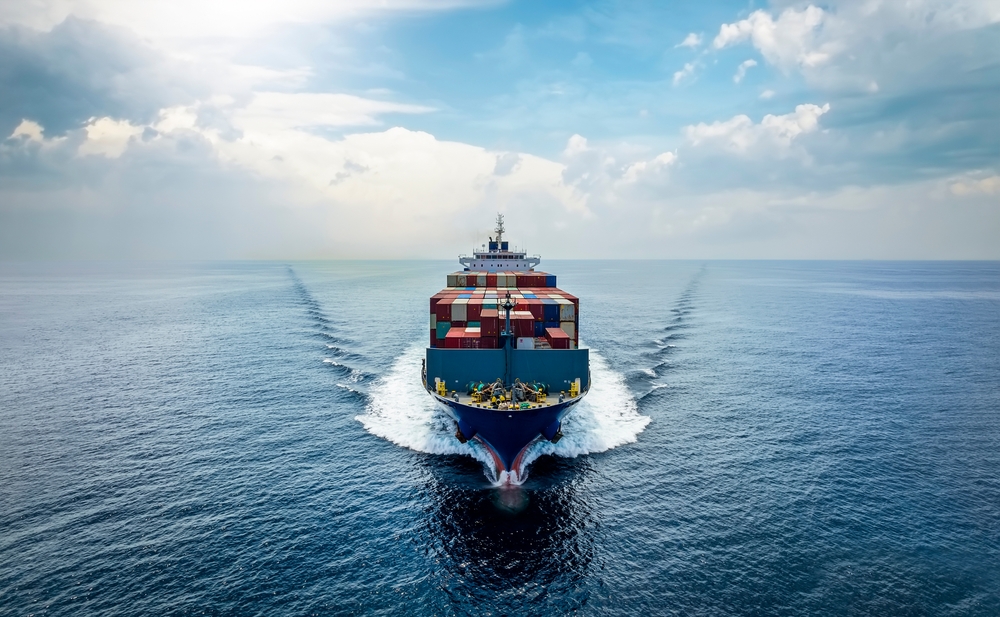The Red Sea Crisis is an incident that unfolded from October 2023, with it beginning to show signs of calming down recently. With the Red Sea being an established area for Sea Freight, how exactly has this conflict affected shipping that uses the Red Sea?
In today’s blog, we will be discussing the impact of the Red Sea crisis on sea freight.
Radius Warehouse and Logistics is here to provide you with all the information you need when it comes to the multiple areas of logistics that we provide, from sea, to air, to road freight solutions. Operating from the South West of England for over 20 years, or experience, and service is here for anyone who requires it.
Sea Freight – The basics
Who works in sea freight?
-
Shippers: Companies or individuals who export goods.
-
Consignees: Companies or individuals who receive imported goods.
-
Freight Forwarders: Act as intermediaries, arranging logistics, documentation, and customs clearance.
-
Shipping Lines: Companies that own and operate cargo ships.
What is the process of sea freight?
-
Export Packing: Goods are packed securely in containers for protection during transport.
-
Land Transport: Containers are trucked or railed to the port of origin.
-
Loading: Containers are loaded onto cargo ships using cranes.
-
Ocean Voyage: Ships navigate designated sea routes to the destination port.
-
Unloading: Containers are unloaded from the ship.
-
Customs Clearance: Goods are cleared by customs authorities at the destination country.
-
Delivery: Containers are transported by truck or rail to the final destination.
What types of cargo can sea freight take?
-
Dry Cargo: This is the most common type, including manufactured goods, machinery, food items, and textiles. Carried in containers.
-
Bulk Cargo: Large quantities of loose cargo like grain, coal, or ore. Transported in specialized holds within the ship.
-
Liquid Cargo: Oil, chemicals, and other liquids are shipped in tankers with dedicated tanks.
-
Refrigerated Cargo: Perishable goods like fruits, vegetables, and meat require temperature-controlled containers.
The advantages and disadvantages of sea freight
Advantages of sea freight
-
Cost-Effective: The most economical way to transport large volumes of goods over long distances.
-
High Capacity: Cargo ships can carry enormous amounts of cargo, making them ideal for bulk transportation.
-
Wide Range of Goods: Sea freight can handle a vast variety of cargo types, from dry goods to liquids to perishables.
-
Global Reach: Sea routes connect virtually every corner of the world, facilitating international trade.
Disadvantages of sea freight
-
Slow Speed: Compared to air freight, sea transport is significantly slower.
-
Less Control: Once cargo is shipped, there’s limited control over its movement until it reaches the destination port.
-
Reliance on Weather: Weather conditions can cause delays.
-
Port Congestion: Busy ports can lead to delays in loading and unloading
What is the Red Sea Crisis?

The Red Sea crisis was a security crisis that unfolded in the Red Sea from October 2023 to March 2024. Here’s a summary:
-
Conflict: The Iran-backed Houthi movement in Yemen launched missile and drone attacks on specific merchant ships and naval vessels sailing through the Red Sea.
-
Cause: The Houthis were targeting vessels from countries they viewed as enemies, likely linked to the ongoing Israeli occupation of Palestine, and the wider Iran-Israel proxy conflict.
-
Response: Houthi attacks drew military responses from the US, Saudi Arabia, and other countries. Hundreds of commercial ships were rerouted around Africa’s Cape of Good Hope to avoid the Red Sea, significantly increasing travel times and operational costs.
-
Current Situation: As of May 2024, the crisis appears to have subsided. However, the underlying tensions remain, and the potential for renewed conflict persists.
The Red Sea crisis highlighted the vulnerability of global shipping lanes to regional conflicts and the economic consequences of disruptions in these crucial waterways.
The Impact of the Red Sea Crisis on sea freight
The Red Sea crisis sent shockwaves through sea freight operations, causing disruptions and economic ripples in multiple key ways.
Houthi attacks in the Red Sea created a security risk for shipping vessels, forcing many companies to reroute around Africa’s Cape of Good Hope. This significantly increased travel times, adding 7-10 days or more to journeys between Asia and Europe.
The longer voyages resulted in higher fuel consumption and operational costs for shipping lines, which were often passed on to shippers and ultimately consumers through increased freight rates.
The re-routing of traffic also caused congestion in ports around the Cape of Good Hope. This critical region experienced a sudden surge of vessels, straining port capacity and leading to delays in loading and unloading cargo.
These delays, coupled with the extended travel times on rerouted routes, contributed to a slowdown in global trade efficiency. Disruptions in the Red Sea, a major passage for oil and container traffic, impacted supply chains and delivery times for various goods.
The heightened security risk in the Red Sea also impacted insurance costs. Shipping insurance premiums rose for vessels travelling through the region, adding another layer of financial burden for shippers.
While the crisis appears to have subsided as of May 2024, the underlying tensions remain. The potential for renewed conflict in the Red Sea casts a shadow of uncertainty over the future of sea freight operations.
The economic impact of this crisis is still being felt, with higher freight rates a lingering consequence. Additionally, the possibility of future disruptions in this crucial shipping lane necessitates long-term adjustments in how some routes are managed.
Can the Red Sea Crisis be resolved?
Challenges
-
Complex Geopolitics: The Iran-Israel conflict and the Yemeni civil war are intricate issues with a long history. Reaching a sustainable solution will be difficult and require significant international cooperation.
-
Mutual Distrust: Deep distrust exists between the Houthis and the Saudi-led coalition backing Yemen’s government. Building trust and fostering dialogue will be crucial.
-
Humanitarian Crisis: Yemen faces a severe humanitarian crisis. Addressing this crisis can help create a more conducive environment for peace talks.
Potential Solutions
-
Diplomacy and Ceasefire: Renewed diplomatic efforts and a lasting ceasefire in Yemen are essential first steps. The international community can play a vital role in facilitating these efforts.
-
Addressing Underlying Grievances: Mediation efforts should address the underlying grievances of the Houthis, such as their political and economic marginalization.
-
Security Guarantees: The Houthis may require security guarantees from the Saudi-led coalition to end hostilities.
-
Humanitarian Aid: Continued and increased humanitarian aid to alleviate suffering in Yemen can create goodwill and encourage peace talks.
While there’s potential for progress, the situation remains fragile. Renewed conflict or a lack of progress on the aforementioned fronts could lead to a resurgence of Houthi attacks and further disrupt vital shipping lanes in the Red Sea.
Looking ahead, the international community has a critical role to play in facilitating dialogue, providing humanitarian aid, and encouraging a peaceful resolution to the underlying conflicts that threaten the stability of the Red Sea region.
Invest in sea freight solutions today

We at Radius Warehouse and Logistics Services encourage you to get in contact with us to see how our services can benefit you. Alternatively, you can get a quote from us directly, or visit our help and advice page for anything further you may need help with.
We hope that our blog provided valuable insight into the impact of the Red Sea crisis on sea freight.
With over 20 years of experience as an independent freight forwarder, you can expect quality service from us. In addition to being a member of BIFA, and trading under the standard trading terms of BIFA, We are also staffed by a dedicated core of enthusiastic and efficient professionals.
Our staff’s many years of experience in this industry welcomes your enquiries and hope you can join our loyal and superb client base.



